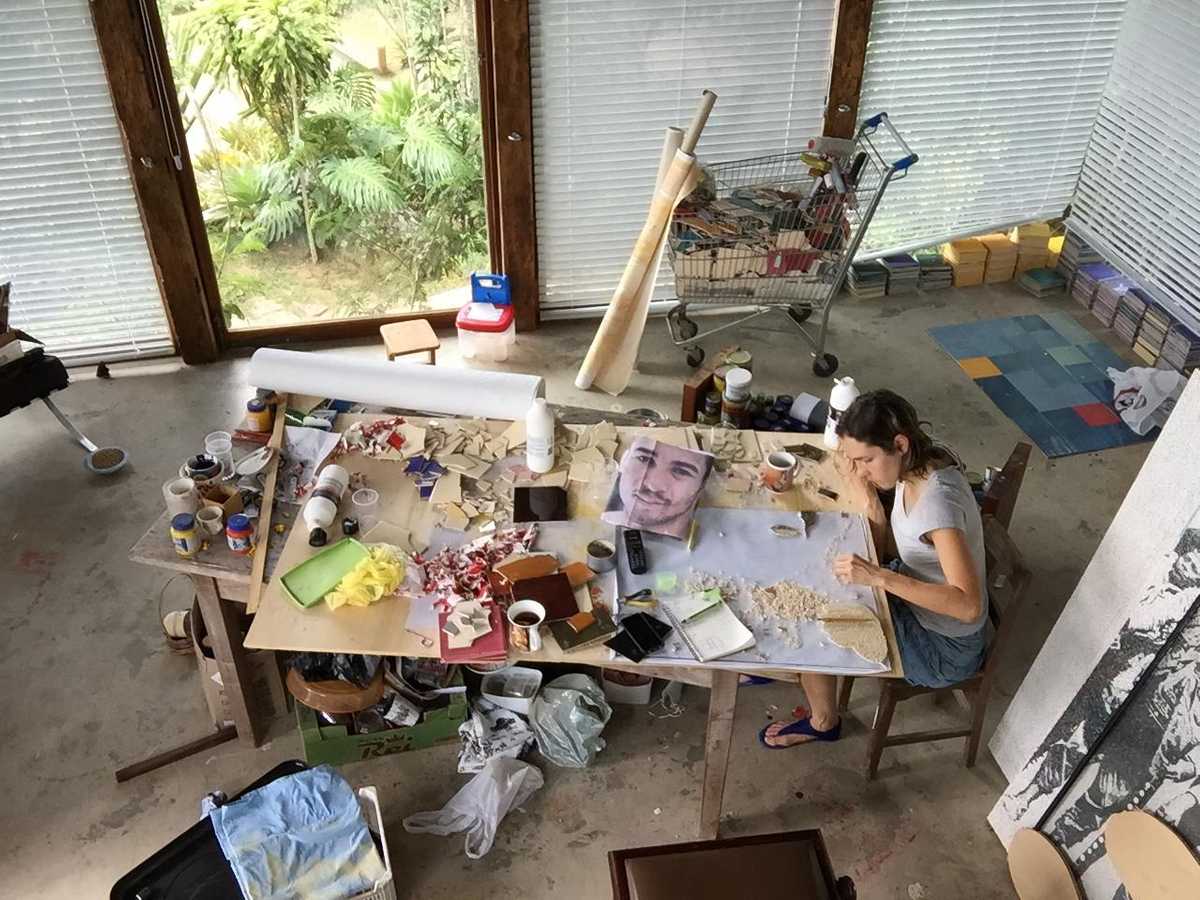Katharina Welper
The work of Rio de Janeiro artist Katharina Welper is linked to a craft which is almost obsessive and which sees memory as a defining locus for the development of its poetry. Another decisive factor in her production is its multifaceted and hybrid nature, as she fluidly moves among various genres such as painting, drawing, collage, performance and textile art and 3-D work. And, if we can select a common element in this movement across genres, this thread may be highlighted, as it transmutes in multiple forms between abundance and concision, deconstruction and creation, break and continuity, for example.
In her more recent series, Katharina has been able to touch relevant contemporary issues through approaches and discussions that reveal a more mature collection. In her new embroidery work, the artist departs from the textile spoils of a German nurse. Few are the signs of such an origin, such as the letters EB written as a bedding monogram. Over this chassis-like surface, Katharina decals a pattern copied from old decorative motifs originating from Easter European crafts and, with arduous handwork, spreads a blue thread to produce an extensive design. The surface of the material itself generates a moving pattern, as tiny pieces are put together making up an amalgam of whites and blues (in different hues), and rougher or smoother parts of the material.
These historically based surfaces also spread to her paintings from different series. The moving backdrops may be periodic Japanese imagery, for instance, in which the diagraming and typography and the specificity of the Japanese alphabet become the crucial foundation on which Katharina produces very accurate paintwork with emphatic realism. There are phone books, old familial pieces of cloth and various other materials alluding to a more intimate and domestic world. Thus, the artist blurs the limits of pictorial, graphic and 3-D crafts, adding movement to each segment.
In addition to the memory that Katharina sees as a relevant legacy, as a draft to be kept rather than erased, her work has an interest in construction. For this reason, her studio and her daily life – currently in Petrópolis, a small town in the mountains in Rio de Janeiro, and previously in the city of Rio itself – become relevant references in her craft. Her own scenes and locations are, at times, the subject of her paintings, in place of images from the web or from papers and magazines, playing a key role in her compositions. The artist also uses a play of hide and seek, at times creating completed works while at other times allowing the emptiness and the observer’s imagination to provide the final contours of her propositions. Her ideas also evolve in a more experimental fashion, such as in the underwater performance in which Katharina embroiders over multiple surfaces and thus mixes even more the attributes of visibility and experience.
Another interesting aspect of the elaboration of Katharina’s visual production is her persistence. This trait becomes very clear, for instance, in the paintings of Linha Moira, one of her individual exhibitions in Rio de Janeiro, in which threads become the basis for each painting. They are transformed, reach a new status, but retain their unique characteristics, resulting in a plastic effect that mixes painting, drawing and collage. “Drawing and painting are two organs belonging to the same body. They act cooperatively to create life. And one is dependent on the other (...) Precision and accumulation, the melding of risk and condensation”1, writes artist Paulo Pasta, in a very appropriate synthesis of the nature of Katharina Welper’s work.
